
views
Resisting the Urge
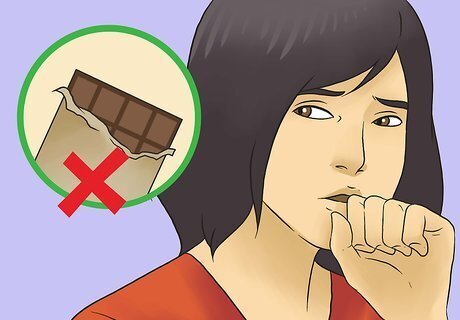
Redirect yourself. Treat your brain’s craving for chocolate like you would treat a toddler who keeps demanding ice cream. Instead of putting effort into battling your urge, find something else to do instead. Being active will help your brain move on. Try taking a walk. Or, if you’re at work and can’t leave the building, even walking up and down stairs can reset your thinking. Talk to friends. Call a friend or start texting or messaging someone online. Typing will keep your hands – and your brain – occupied, making it hard to give in and eat that chocolate.

Find a pet or a loved one. Giving and getting hugs also makes you feel better. Instead of the dopamine rush you get from chocolate, hugging can give you a rush of oxycotin, which also makes you feel better without the regret of chocolate.

Remind yourself of reasons to avoid chocolate. Chocolate is high in fat, high in calories, and high in sugar. It tastes good when you give into it, but it won’t feel good in the long run. Treat yourself right. Your health will thank you if you avoid it. Chocolate does actually make you feel better – it gives you a rush of dopamine. But that good feeling only lasts three minutes.
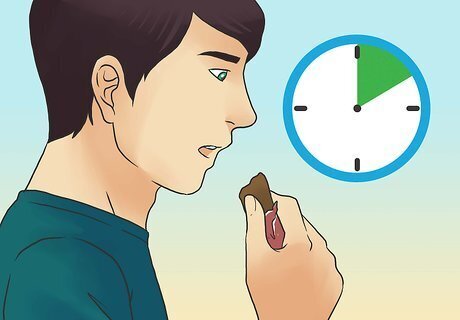
Make resisting temptation a game. See how long you can go. Wait five minutes. Then up the time to ten minutes. Postpone the urge, and if it’s not out of hunger, you might find that it dissipates the longer you wait, or you may get busy doing something else and forget about the urge altogether. Each time you give in and eat it, your brain will make stronger connections telling you that you should have it. The more you resist that temptation, the weaker that connection becomes.

Reward yourself. You may have gotten used to making chocolate your treat after a long day at work or a difficult experience, but think of other things that make you feel better. Why not take a bath, get a new book at the library, or play a video game? You can change your rewards based on how you feel, or you may find one that works perfectly for you every time.
Keeping Chocolate Out of Reach

Don’t shop when your resistance is low. You probably know not to shop when you’re hungry. You also shouldn’t shop when you’re depressed or stressed. Your ability to resist comfort food like chocolate will be lower when you’re emotional. If you have to go to the grocery store when you think you might not be to resist the chocolate-buying urge, avoid the candy aisle and the bakery.
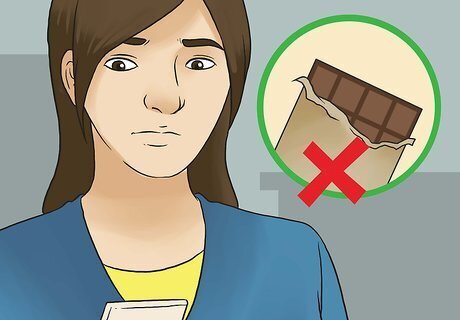
Hide it. You might have a family that isn’t willing to give up chocolate, or you may need it in your house for another reason. When you can’t get rid of it, make it easier to eat something else instead. Don’t keep chocolate accessible. If you need to have it nearby, hide it away, freeze it, or do whatever makes it more of an effort for you to get to it. The harder you have to work, the more you’ll consider if you need it.
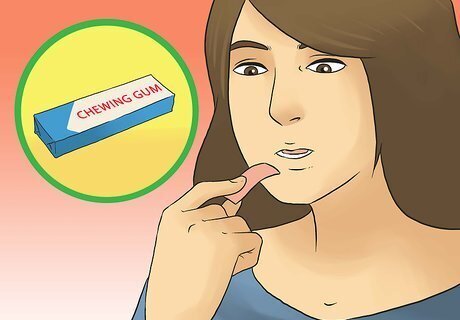
Chew gum. Sometimes mint can help you get over the urge for chocolate. Chewing can also make you feel like you’re eating something.

Tell people. It’s hard to get support from friends and family if they don’t know what’s going on. Let them help you instead of damage your resolve. It may take some reminders to get them to remember that you’re avoiding it, but once they catch on, they should support you. You might say that you’ve decided to stop eating chocolate, and give them the reason why. “I’m giving up chocolate to help with my weight loss” or “to reduce the sugar I eat” or even “because it’s Lent.”
Replacing Chocolate

Plan ahead. If you have any get-togethers with friends or family that include desserts, offer to bring something that isn’t chocolate-based to share. When you’re going out to eat, check the menu ahead of time. Planning out what you’ll eat can keep you from giving in at the last minute.

Opt for a healthy dessert. Chocolate is a standard go-to for desserts, but that doesn’t mean you have to do without dessert. Instead, think of dessert options that are healthier, or at least ones that don’t have chocolate in them. You might choose to opt for a cheese plate, or if you need something sweet, go for a fruit sorbet.
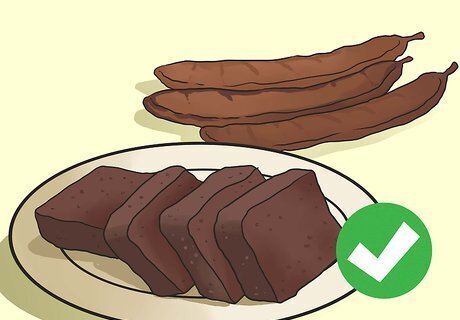
Eat carob. Carob doesn’t have quite the same crave-appeal as chocolate, but it does still have a creamy taste and the look of chocolate. It’s made from carob tree pods, and can be used as a natural sweetener. Many health food stores and even aisles in the grocery stores have carob snacks and treats.
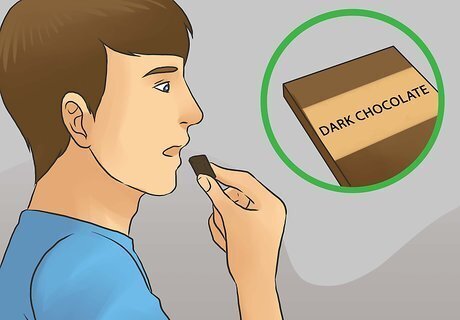
Try some dark chocolate. Dark chocolate can be good for you, in small doses. There is evidence that it can help you avoid strokes and might even improve your skin. You will want to limit the amount you eat, but if you need to give in, a small piece of dark chocolate is a good option.
Dark chocolate-covered almonds also make for a satisfying and nutrient-rich snack.
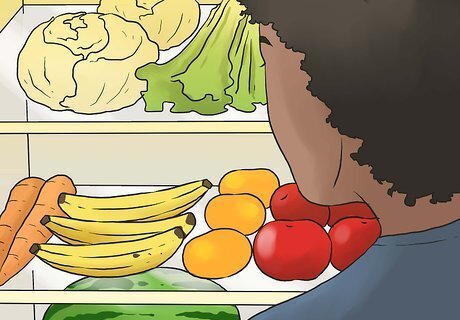
Load up your refrigerator with fruits or vegetables. Having healthy food easily accessible will make it easier to fill up on it. You can choose items that are easy to eat without preparation, such as baby carrots, grapes, or apples, or you can buy more prep-intensive items, like pineapple. For the more prep-intensive fruits and veggies, prepare them as soon as you get them home so that you won’t have to do anything but grab a bowl from the refrigerator.
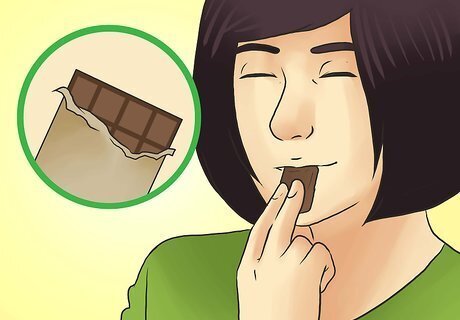
Indulge on special occasions. You might find it impossible to remove all chocolate from your life, but that’s okay. Moderation is key. Special occasions are a chance to give in a bit. Just limit your intake – if you get chocolates for a holiday, like Valentine’s Day, find other people that aren’t avoiding chocolate. Keep a few pieces for yourself, but give the rest to them. They’ll probably thank you, and you can feel good about passing it along instead of giving in to your urge.















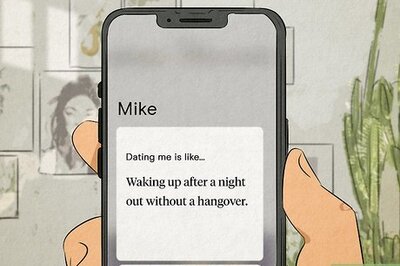


Comments
0 comment